The Spring Festival is approaching, and many people have already embarked on the journey home. I believe that many people go home with big bags and small bags. Have you ever thought about how many ways you have changed from the first time you carried a schoolbag to the present? On both shoulders, on one shoulder, on your forearm, in your hand, or simply stuff it into your trouser pocket?
Different ways of carrying the bag, the weight of the bag, the length and angle of the strap, and the placement of the items all affect the body posture and effort. Years of incorrect bag-holding posture may be the cause of your shoulder, neck, lower back pain, or it may lead to a deviation in body posture . The following is a guide for healthy people to take bags. Patients with related diseases should follow the doctor’s advice.
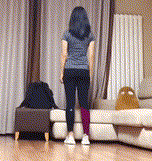
I was standing upright, but the bag on my back became crooked丨Photo courtesy of the author
Most importantly, light
The total weight of the bag should be as light as possible, try not to exceed 10% of the body weight , at most 20%. Relatively thin people need to reduce the burden [1-3].
Because no matter how you hold it, the heavier the bag, the more crooked the body will be. Not only does the head extend forward and the body leans forward, but the intervertebral disc in the middle of the spine will also be compressed more flat. These will increase the pressure on the tissues around the spine and the joints of the lower extremities, resulting in pain everywhere and damage to the joints [4-6].
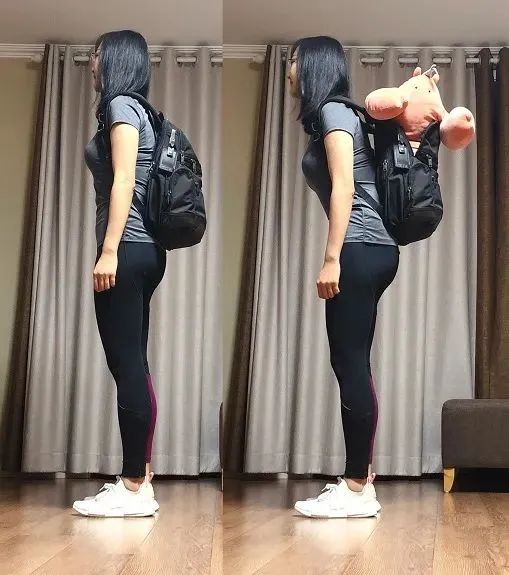
The backpack becomes heavier, the head stretches forward, and the body leans forward丨Photo courtesy of the author
If the things you want to bring are too heavy, use boxes instead. Under the same weight, the body posture when pulling or pushing the box is better than that of the backpack, so it is more comfortable and less labor-intensive, especially when you need to stand and wait for a long time (the trolley of the box is long enough to hold it when you stand upright). But when there are many ramps and steps on the road, backpacks are easier than carrying boxes [7-9].

Better body posture when pulling boxes丨Photo courtesy of the author
Don’t dislike backpacks, be healthy
Besides weight, the way you pack has the biggest impact on your body. Some people think backpacks are ugly, but a symmetrical posture on both sides is healthier than a single shoulder bag.
Bilateral is better than unilateral
When held on one side, the bag on one side will pull the body sideways, resulting in scoliosis, high and low shoulders, uneven force on the legs, and prone to head, shoulder, neck, low back and lower limb joint pain. For a bag of the same weight, changing it to a backpack can significantly reduce these discomforts [4, 10-15].
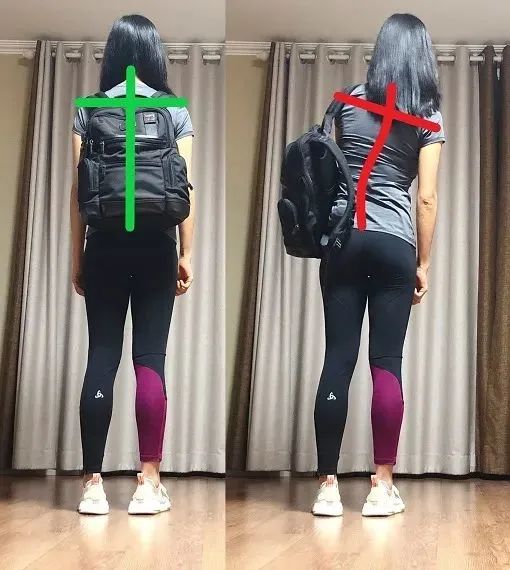
The body of the backpack is symmetrical left and right, and the body of the one-shoulder bag is skewed丨Photo courtesy of the author
Alternate front and back, walk behind the back
People often hang backpacks on their chests for the convenience or safety of taking things. It’s not easy to bend over like this, but the body leans back more than when the back is on the back, and the pressure on the waist is greater. When the backpack is standing for a long time, it can alternate back and forth, but when walking, it is more comfortable to carry it on the back [11, 16-20].
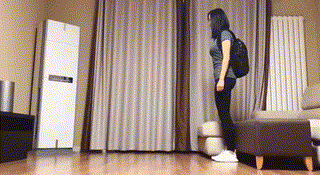
Leaning forward with the back on the back, leaning back with the bag in the front丨Photo courtesy of the author
Wide shoulder straps are soft and narrowly spaced
Shoulder pain while backpacking is often related to the shoulder straps. Wide, padded, soft straps are more comfortable. The distance between the two shoulder straps should not be too large, and the angle is preferably 48°~60° . If the distance or angle is too large, it will increase the pressure on the shoulder and may cause shoulder pain [19, 21, 22].

The distance and angle of the shoulder straps in the left picture are appropriate, but the angle in the right picture is too large丨pixabay, pxfuel
Let the center of the bag be at waist height
When adjusting the shoulder straps, first ensure that the lengths on both sides are the same, and then adjust the length of the shoulder straps according to the height so that the center of the bag is at the waist. If the shoulder straps are too short, carrying the bag on the upper back may cause discomfort in the shoulders and neck and difficulty in breathing. If the shoulder strap is too long, if the bag is placed on the hip, the waist will be uncomfortable, and the bag will shake when walking, making it more laborious [2, 3, 19-24].
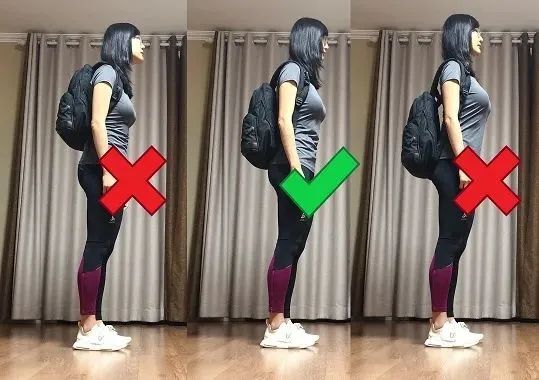
The backpack in the left picture is too high, the middle picture is moderate, and the right picture is slightly lower丨Photo provided by the author
If the pack has a hip belt, fastening it can reduce shoulder stress by nearly one-third and make the pack more stable during walking [2, 25].

Fasten Your Belt for Easier 丨nps.gov
It has to be on one side, try to carry it on your shoulder and don’t hold it in your hand
If you want to carry the bag on one side, it is better to carry it on the shoulder. Because when the bag is hung on the forearm or held in the hand, people will unconsciously hunch their back more and shake their body more, which makes them uncomfortable and unstable [11, 26].
When carrying a single-shoulder bag, you can lengthen the shoulder strap and carry it diagonally across your back, which is better than carrying it on one side [14]. If you can’t straddle obliquely, shorten the shoulder straps so that the left and right sides of your body are more balanced when you walk [27].

Diagonal span is better than unilateral back丨Photo courtesy of the author
Sometimes it is enough to only bring your mobile phone and keys when you go out. At this time, you don’t need a bag, and you can put them all in your pants pocket. But when carrying heavier items, it is better to use a backpack to save effort [6, 28]. When exercising, it is more comfortable to put the phone in the waist bag than the arm bag.
Don’t stuff the items in the bag casually
When packing things in your bag, you need to pay special attention to the position of heavy objects. First, try to secure the heaviest items as close to your body as possible, like plugging your computer into the divider close to your back so it doesn’t slide into the back of your bag. As long as the center of gravity of the contents of the bag is moved forward by 5 cm, the shoulder pressure will be significantly reduced [2, 17, 21].
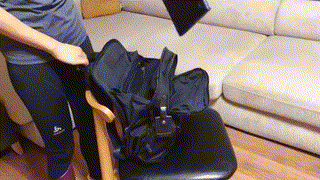
The computer is placed at will, with the center of gravity behind, and it is more labor-saving to fix it in the partition丨Photo provided by the author
The second is the height of the heavy object. When standing still or walking on a flat road, it is less labor-intensive to place the heavy object in the upper part of the backpack. But when going up and down ramps or steps, you can walk more stably by putting heavy things in the middle and lower parts of your bag [28-30].
Carry shopping bags evenly in both hands
When you buy a lot of things from the supermarket and you can’t put them in your backpack, try to divide them into two bags and distribute the weight evenly between your two hands.
If you only use your right hand to carry it, the force on the left leg will be significantly greater than that on the right leg when walking, and the joints will be easily damaged, especially when going up and down steps. In addition, when carrying objects of the same weight, the pressure on the spine is greater than that with both hands, and the intervertebral discs are more likely to be damaged [13].
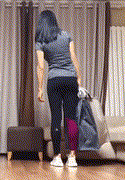
Two hand-held shopping bags are better than one hand丨Photo courtesy of the author
Finally, no matter how you carry the bag, remember to keep your core stable and straighten your body.
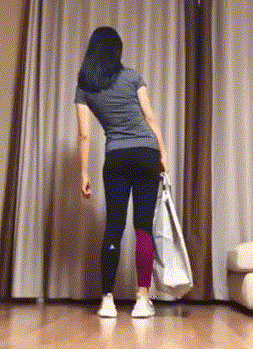
Stabilize the core and straighten the body丨Photo courtesy of the author
references
[1] Jurak I, Rađenović O, Bolčević F, Bartolac A, Medved V. The Influence of the Schoolbag on Standing Posture of First-Year Elementary School Students. Int J Environ Res Public Health. 2019;16(20):3946.
[2] Mackie HW, Stevenson JM, Reid SA, Legg SJ. The effect of simulated school load carriage configurations on shoulder strap tension forces and shoulder interface pressure. Appl Ergon. 2005;36(2):199–206.
[3] Grimmer K, Dansie B, Milanese S, Pirunsan U, Trott P. Adolescent standing postural response to backpack loads: a randomised controlled experimental study. BMC Musculoskelet Disord. 2002;3:10.
[4] Fowler NE, Rodacki AL, Rodacki CD. Changes in stature and spine kinematics during a loaded walking task. Gait Posture. 2006;23(2):133–141.
[5] Shymon S, Hargens AR, Minkoff LA, Chang DG. Body posture and backpack loading: an upright magnetic resonance imaging study of the adult lumbar spine. Eur Spine J. 2014;23(7):1407–1413.
[6] Seay JF. Biomechanics of Load Carriage–Historical Perspectives and Recent Insights. J Strength Cond Res. 2015;29 Suppl 11:S129–S133.
[7] Orantes-Gonzalez E, Heredia-Jimenez J, Beneck GJ. Children require less gait kinematic adaptations to pull a trolley than to carry a backpack. Gait Posture. 2017;52:189–193.
[8] Orantes-Gonzalez E, Heredia-Jimenez J. Gait asymmetry and rating of perceived exertion: How are they influenced by carrying a backpack and pulling a trolley? Work. 2019;63(2):253-259.
[9] Orantes-Gonzalez E, Heredia-Jimenez J, Robinson MA. A kinematic comparison of gait with a backpack versus a trolley for load carriage in children. Appl Ergon. 2019;80:28-34.
[10] Bettany-Saltikov J, Warren J, Stamp M. Carrying a rucksack on either shoulder or the back, does it matter? Load induced functional scoliosis in “normal” young subjects. Stud Health Technol Inform. 2008;140:221- 224.
[11] Bettany-Saltikov J, Cole L. The effect of frontpacks, shoulder bags and handheld bags on 3D back shape and posture in young university students: an ISIS2 study. Stud Health Technol Inform. 2012;176:117–121.
[12] Holland CJ, Godwin MS. The metabolic demand of external load carriage in golfers: a comparison of a single versus double-strap golf bag. J Sports Med Phys Fitness. 2019;59(12):1963-1967.
[13] Wang J, Gillette JC. Carrying asymmetric loads during staircase negotiation: Loaded limb stance vs. unloaded limb stance. Gait Posture. 2018;64:213–219.
[14] O’Shea C, Bettany-Saltikov JA, Warren JG. Effect of same-sided and cross-body load carriage on 3D back shape in young adults. Stud Health Technol Inform. 2006;123:159–163.
[15] Skoffer B. Low back pain in 15- to 16-year-old children in relation to school furniture and carrying of the school bag. Spine (Phila Pa 1976). 2007;32(24):E713–E717.
[16] Gómez L, Díaz CA, Orozco GA, García JJ. Dynamic analysis of forces in the lumbar spine during bag carrying. Int J Occup Saf Ergon. 2018;24(4):605–613.
[17] Rose JD, Mendel E, Marras WS. Carrying and spine loading. Ergonomics. 2013;56(11):1722-1732.
[18] Rodrigues FB, Magnani RM, Lehnen GC, Souza GSSE, Andrade AO, Vieira MF. Effects of backpack load and positioning on nonlinear gait features in young adults. Ergonomics. 2018;61(5):720–728.
[19] Golriz S, Walker B. Backpacks. Several factors likely to influence design and usage: a systematic literature review. Work. 2012;42(4):519–531.
[20] Chow DH, Ou ZY, Wang XG, Lai A. Short-term effects of backpack load placement on spine deformation and repositioning error in schoolchildren. Ergonomics. 2010;53(1):56-64.
[21] Bygrave S, Legg SJ, Myers S, Llewellyn M. Effect of backpack fit on lung function [published correction appears in Ergonomics. 2004 Apr 156;47(5):606]. Ergonomics. 2004;47(3): 324–329.
[22] Kim MH, Yoo WG. Effect of the spacing of backpack shoulder straps on cervical muscle activity, acromion and scapular position, and upper trapezius pain. J Phys Ther Sci. 2013;25(6):685-686.
[23] Chen YL, Mu YC. Effects of backpack load and position on body strains in male schoolchildren while walking. PLoS One. 2018;13(3):e0193648.
[24] Abdelraouf OR, Hamada HA, Selim A, Shendy W, Zakaria H. Effect of backpack shoulder straps length on cervical posture and upper trapezius pressure pain threshold. J Phys Ther Sci. 2016;28(9):2437–2440.
[25] Sharpe SR, Holt KG, Saltzman E, Wagenaar RC. Effects of a hip belt on transverse plane trunk coordination and stability during load carriage. J Biomech. 2008;41(5):968–976.
[26] An DH, Yoon JY, Yoo WG, Kim KM. Comparisons of the gait parameters of young Korean women carrying a single-strap bag. Nurs Health Sci. 2010;12(1):87–93.
[27] Yoon JY, Lim WT, Oh JS. Influence of the strap-length on the trunk motion and gait symmetry in Korean women carrying a single-strap bag. J Back Musculoskelet Rehabil. 2012;25(4):269–274 .
[28] Knapik JJ, Reynolds KL, Harman E. Soldier load carriage: historical, physiological, biomechanical, and medical aspects. Mil Med. 2004;169(1):45–56.
[29] Stuempfle KJ, Drury DG, Wilson AL. Effect of load position on physiological and perceptual responses during load carriage with an internal frame backpack. Ergonomics. 2004;47(7):784-789.
[30] Yoo WG. Effects of a low-center-of-gravity backpack on the trunk stability of mountaineers while ascending and descending. J Phys Ther Sci. 2015;27(10):3259-3260.
Author: Dai Tianyi
Edit: odette

This article comes from Guoke, and shall not be reproduced without authorization.
If necessary, please contact [email protected]

This article is transferred from: http://www.guokr.com/article/463286/
This site is only for collection, and the copyright belongs to the original author.